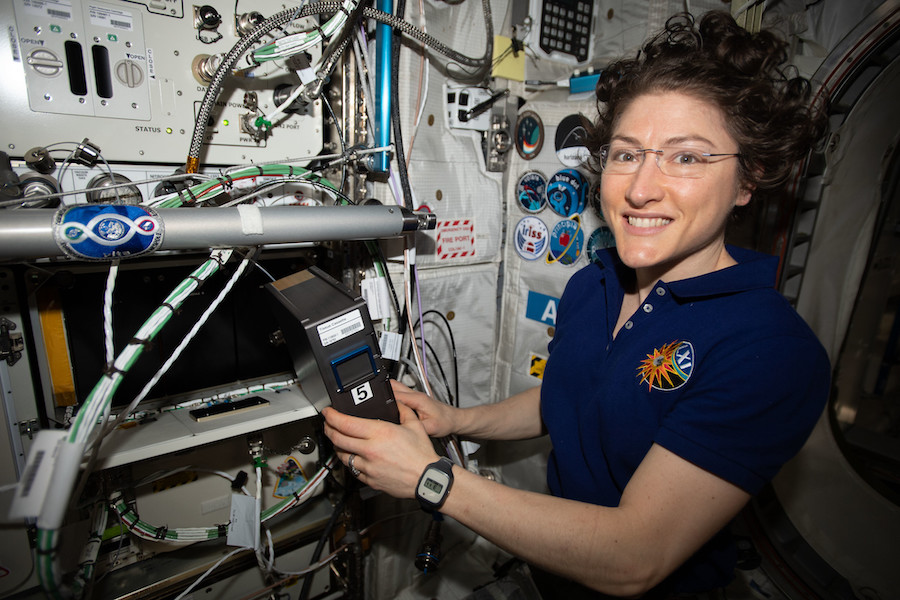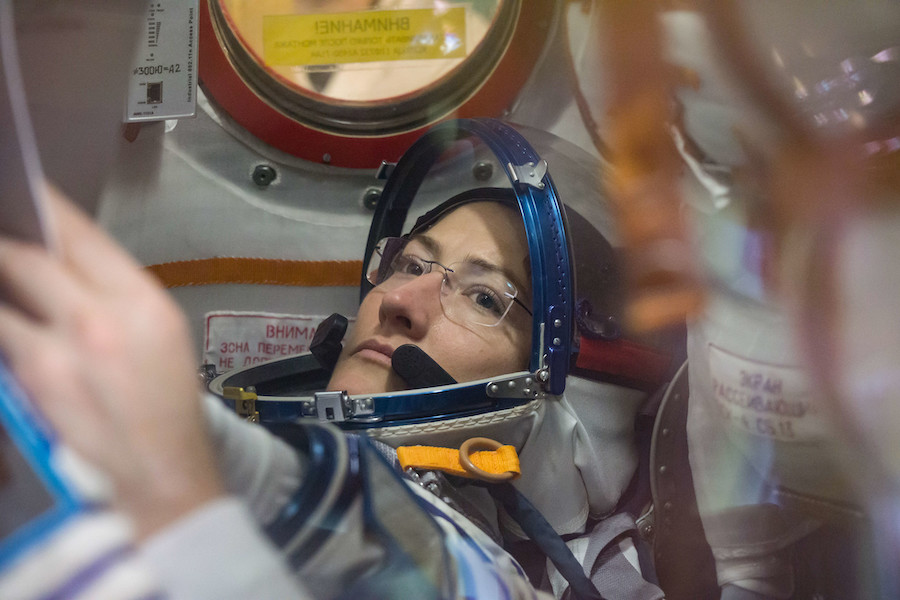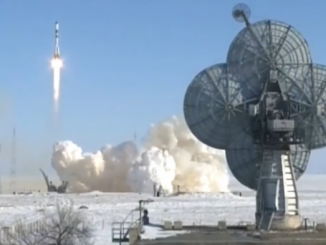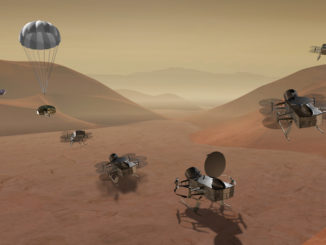STORY WRITTEN FOR CBS NEWS & USED WITH PERMISSION

Astronaut Christina Koch, launched to the International Space Station in March, marks her 289th day in space Saturday, breaking retired astronaut Peggy Whitson’s world record for the longest single spaceflight by a female.
Along the way, Koch has participated in four spacewalks, joining astronaut Jessica Meir for history’s first all-female excursion in October. She plans to venture back outside twice more in January, again teaming up with Meir, to complete installation of new solar array batteries.
When Koch returns to Earth Feb. 6, her time in space will stand at 328 days, just 12 shy of retired astronaut Mark Kelly’s U.S. single-flight record, set in 2016. The all-time record — 438 days — was set by cosmonaut Valery Polyakov in 1995. Whitson still holds the U.S. record for total time in space — nearly 666 days — over five flights.
“Records are made to be broken,” Whitson tweeted Saturday. “It is a sign of progress! Congrats @Astro_Christina”
“It’s a huge honor,” Koch said early Friday in an interview with “CBS This Morning.” “Peggy is a heroine of mine who’s also been kind enough to mentor me through the years. You know … it’s not so much how many days you’re up here, but what you do with each of those days. That reminds me to bring my best every single day.”
Koch holds a master’s in electrical engineering, is a veteran of multiple research tours in Antarctica and Greenland and helped design instruments at the Goddard Space Flight Center for NASA science probes in orbit around Earth and Jupiter. She and Meir were selected for NASA’s astronaut corps in 2013, joining a class made up of four men and four women.
“It’s a wonderful time for human spaceflight because I think we finally recognize that it’s not worth going unless we go together, that it’s important to not turn away any innovative idea, that everyone has a role and everyone has a place at the table as we move forward,” Koch said.
“If we’re going to go for all humanity and to support humanity’s love for exploration, then we have to do it with all humanity. And I think we’re seeing that as our plans unfold for going back to the moon, seeing the first woman walk on the moon in 2024, and just recognizing that we have to go together if we’re going to go, and we’re going to do it right.”
Koch became the 14th woman to walk in space last March 29 when she and Nick Hague worked to install a second set of solar array batteries. She originally was expected to venture outside with astronaut Anne McClain for the first all-female spacewalk, but Hague took McClain’s place because of a spacesuit sizing issue.
The all-female spacewalk finally happened on Oct. 18 when Koch and Meir, the 15th woman walk in space, ventured outside to replace a faulty battery charge-discharge unit. It was the first EVA by two women in the 54 years since the late Soviet cosmonaut Alexey Leonov carried out history’s first spacewalk in 1965.
Cosmonaut Svetlana Savitskaya became the first woman to walk in space during an excursion with a male cosmonaut in 1984. NASA astronaut Kathryn Sullivan followed suit later that year, joining astronaut David Leestma for a shuttle spacewalk.

“My class was … the first class that’s half female and half male, and we were never held to any different standards or expectations,” Koch told “CBS This Morning.” “Highlighting the fact that it was the first all-female EVA, spacewalk, is important because seeing those milestones be broken sort of tells people where we’re at and where we think that the importance lies.
“I think it’s inspiring because future space explorers do need to see people that remind them of themselves to kind of bring that inspiration home. I know that was certainly true for me and my background. So to have the opportunity to do that for future space explorers is a real honor.”
Asked about her most memorable moments in space, Koch said she enjoyed looking down on Michigan and North Carolina where she grew up, “but I would say the most awe-inspiring thing that I’ve ever seen is the northern lights or southern lights from above on a planetary scale.”
“I’ve had the opportunity working in Antarctica and the Arctic to see them from below and the beautiful, shimmering lights taking over the whole sky,” she said. “But to look down on the Earth and see the entire shape of the aurora as they form near the poles was truly an amazing sight and just literally took my breath away.”
Koch said she hopes setting a new single-flight endurance record will serve as a milestone to motivate others while pushing the boundaries of science because “that’s important for our future exploration … going to Mars and also returning to the moon and going there to stay.”
“But overall, I’d have to say that my number one hope for this milestone is that the record is exceeded again as soon as possible,” she said. “Because that means that we’re continuing to push the boundaries.”



